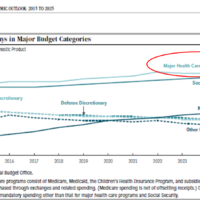The FDA announced yesterday that both the FDA and the European Medicines Association (EMEA) will accept seven biomarker tests for early kidney damage. These animal based tests were developed by a public-private collaborative and will be a voluntary part of the regulatory applications for new drugs. However, it is believed that companies will benefit by doing these test because they will both be able to detect toxicity problems earlier in a drugs development, and enable the approval of more powerful drugs, “because health care professionals could closely monitor patients and halt the drug if early signs of renal toxicity appear.”
“The development of these and other biomarkers can result in important tools for better understanding the safety profile of new drugs,” said Janet Woodcock, M.D., director of FDA’s Center for Drug Evaluation and Research. “We hope these biomarkers will lead to human tests that detect drug-induced kidney injury in people earlier than is now possible, and help health care professionals better manage potential kidney damage from drugs.”
This advanced use of biomarkers represents a quantum leap in our understanding of molecular toxicities and organ damage – these tests detect cellular damage in a matter of hours rather than the actual kidney dysfunction which had occurred over several days by the time the traditional tests of blood urea nitrogen (BUN) and creatinine have become elevated.
The development of these types of biomarkers was also predictable. Over 10 years ago – with prompting by senior industry scientists – I had several discussions with Congressional and NIH staff about the potential value of government support for validating these types of biomarkers. It was important that the government take the lead in developing these tests since all companies would benefit once the biomarkers were validated, and thus the research was beyond the scope of any single company. This reality led to the formation of the public-private coalition to conduct the research to validate specific biomarkers. However, the formation of this consortium is somewhat remarkable because of the structural/cultural barriers between the industry and the regulatory and scientific agencies, and the extreme public scrutiny and criticism of any collaboration between the pharmaceutical industry and its regulatory agencies – no matter how valuable the public benefits.
The development of the kidney related tests is not an isolated advancement. The non-profit organization managing this initiative is working on similar tests for cardiovascular diseases, cancers, and other diseases. Patients and clinicians certainly hope that similar tests are developed quickly for these conditions, and that they will improve the speed and quality of developing and approving new and better medicines.
Accelerating these advancements will depend on how Congress funds the FDA to increase its scientific capabilities and modernize its information technology, as well as how much attention the next President gives to the FDA’s activities – which he should since they touch every American and affect ~25% of the US economy.

